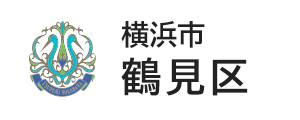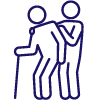- Yokohama-shi Top Page
- Tsurumi Ward Top Page
- Introduction of the ward
- Overview of Tsurumi Ward
- History of Tsurumi Ward
- 23rd: Sojiji Temple Two Kannon Statues
Here's the text.
23rd: Sojiji Temple Two Kannon Statues
Last Updated July 9, 2024
People who visit the deep and deep forest in search of peace for a moment, people who draw Buddhas and cathedrals, people who visit Motoyama from pure religion, people who visit graves of close friends and family, parents and children walking, celebrities Cemetery sweeping moss…。 A variety of people are visiting Sojiji Temple with various thoughts.
Statue of Sakuragi Kannon Bodhisattva (Sakuragi Kannon)
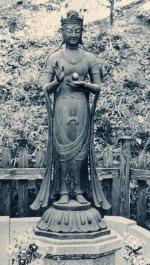
Statue of Sakuragi Kannon Bodhisattva (front)
Passing through the concrete Niomon (Mikado), which is said to be the best in Japan, you will find the statue of Sakuragi Kannon Bodhisattva (Sakuragi Kannon) on the left. This beautiful bronze statue was built on April 24, 1952, praying for the happiness of victims in a train fire accident at Sakuragicho Station in 1951. Kannon statue standing dignifiedly on an octagonal pedestal on an octagonal base. This beautiful Kannon statue was created by the spontaneous offer of Shinpei Akahori, the authority of the sculpture world at the time. The name "Sakuragi Kanzeon Bodhisattva" and the 103 names of victims are written by Sogen Asahina, director of Kamakura Enkaku-ji Temple. On the fan-shaped folding screen behind the pedestal, there are two statues of heavenly women who reach out, playing music as if bringing the souls of victims to the sky. The founders of the statue were Tokyo station manager and the union chairman of the Japan National Railways Labor Union.
At hand, there is a copy of a photo taken from the front of the Kannon statue in the Showa 30s (upper left) and a photo taken from a slightly lower angle this summer (lower right). Although it should be the same Kannon statue, there are subtle differences in facial expressions and hand positions, depending on the viewing angle and viewing angle. For half a century after being exposed to the snow and snow, victims's remorse of the accident, the suffering and sorrow of the bereaved family, seems to have increased in depth. Fifty years ago, trees are now growing around the Kannon statue, which had no trees, and a deep forest is approaching behind it. However, the most important difference is that the Kannon statue at the time of its foundation has a jewel on the left hand, but there is no jewel in the hand of the current Kannon statue! ?
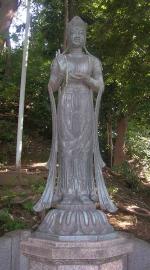
Statue of Sakuragi Kannon Bodhisattva
According to someone who knew when the Kannon statue was built, the jewel was engraved with the names of 103 victims in the accident. I don't know when and why the jewel left the Buddha's hand, but the Kannon statue stands on an octagonal pedestal. The octagon represents the universe, which is the source of life, and the memorial tower not only mourns the spirits of the dead, but also has various wishes, such as the happiness of those left and those who live in the later world, and the rebirth of the immortal soul.
Speaking of octagonal, Horyu-ji Temple Yumeden. The main statue of the dream hall is the national treasure Kannon Bodhisattva statue (Saviation Kannon, Guzekannon), which is said to have been modeled on Prince Shotoku. Until the white cloth covering the whole body was unraveled by Tenshin Okakura and Fenorosa in 1884, the Kannon of Saviation, which has long been regarded as a secret Buddha, has a jewel that all wishes will be fulfilled with both hands.
Shinpei Akahori, the creator of Sakuragi Kannon, was asked to design a school badge for Asuka Junior High School in Kita-ku, Tokyo in 1947. It is said that he studied and stylized the "phoenix" on the canopy of Horyu-ji Temple, reminiscent of the Asuka era, reminiscent of the Asuka era, and was reminiscent of the Asuka era. Naturally, it is not hard to imagine that he was fascinated by the dream hall and the sound of salvation. All Prince Shotoku's clan, who tried to rule the country through Buddhism, died unworked. The dream hall and the salvation Kannon erected to sink the prince's regrets……。
The Sakuragi Kannon and the octagonal pedestal, built in 1952, were entrusted with the deep thoughts of the creator Shinpei Akahori, which led to the legend of Prince Shotoku and the Kannon of Yumeden. The souls of the 103 people held in the hands of Sakuragi Kannon may be reborn over 50 years and become a new life, and may live in the present era.…。
The statue of Hikarikannon
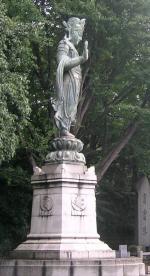
Bodhisattva statue (2nd generation)
The Hokko Kannon statue, which gently welcomes worshipers from the grove at the back of the large parking lot, is the second generation. The first Hokko Kannon statue was cast in 1925 by Taketaro Shinkai, a member of the Imperial Academy of Fine Arts and a sculptor who has a deep knowledge of Buddhist art. This statue is said to have been a beautiful Kannon statue with a height of 33 feet based on the Kannon religion.
The pedestal is the work of Chuta Ito, the first architectural historian in Japan, known for designing Heian Shrine and Tsukiji Honganji Temple, which academically showed that Horyu-ji Temple is the oldest temple architecture in Japan.
The Hokko Kannon statue was built in 1925, about 15 years after Motoyama moved from Noto, thanks to the fact that the temple as Motoyama was well-established and that the large business was progressing without delay. However, the pedestal designed by Chuta Ito also means six Kannon that rescues the sentients who return to the six roads. Sanskrit characters such as Seshi Bodhisattva and Kanzeon Bodhisattva are beautifully arranged on the hexagonal granite pedestal. It is believed that the Hokko Kannon statue had a wish to rescue and memorialize the spirits of victims after the Great Kanto Earthquake of 1923 due to the great mercy of Kanzeon Bodhisattva.
The statue of the Hokko Kannon stood by the banks of Ryuo Pond. It is said that the red-painted bridge, the lotus flower floating on the lake, the green breeze from Fukiagedai, and the Kannon statue on the surface of the water are so beautiful that it could not be said to be, and the banks of Ryuo Pond had the atmosphere of paradise. However, there are many things. The storm of the war took away the beautiful Buddha who lived in another heavenly area of Ryuo Pond.
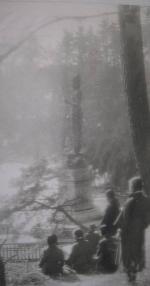
Photography Bodhisattva statue (first generation)
During the Pacific War, metal collection (delivery) began in 1941 due to the shortage of metal resources, and with the deterioration of the war, iron bottles, pots, kettles, rings and fire chopsticks, Buddhist utensils, closet handles, and temple bells and statues of great people also turned into gun bullets and weapons. Sojiji Temple also received an order to donate a large bell, but it was difficult to carry the temple bell too large, so as a substitute, a firelight Kannon statue standing on the banks of Ryuo Pond was offered.
In the spring of 1944, the Hokko Kannon statue, whose whole body was covered with white cloth, was seen off by Kannon sutras sung by monks and tears of those who spared parting, and left this land.
The graduation album of Tsurumi High School showed the first Hokko Kannon statue by Taketaro Shinkai. The fragrant Kannon statue of the pond, which is watched by female students and watched by female students, was a beautiful Buddha that was undeniable to the legend.
The hexagonal pedestal produced by Chuta Ito was an empty seat without a Lord, but in 1965, with the wish of traffic safety, the second generation of the Hokko Kannon statue by Masakuni Yamawaki was donated by Nissan Motor Katsuji Kawamata. Was rebuilt.
In 2005, while being registered as a registered cultural property of the country, such as the Buddhist temple of Sojiji Temple (Daiyuhoden), Sanmatsu Seki, Kosekidai, Shiundai, Hokkodo, Bell Tower, Sanhoden, etc. I have. The large monastery designated this time was also designed by Chuta Ito. In addition, there are many works by Chuta Ito, such as the tombs of Soichiro Asano and Shinchi Tanaka, at Sojiji Cemetery. Chuta Ito himself is also sleeping in Sojiji's own tomb.
Inquiries to this page
Tsurumi Ward General Affairs Department Ward Administration Promotion Division
Telephone: 045-510-1680
Telephone: 045-510-1680
Fax: 045-510-1891
Email address: tr-kusei@city.yokohama.lg.jp
Page ID: 687-898-277
